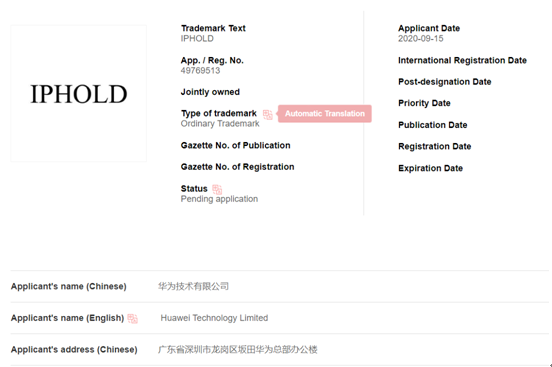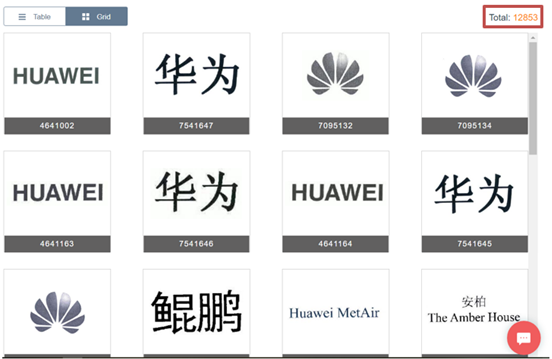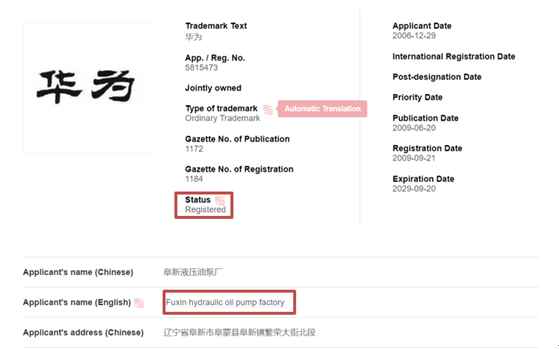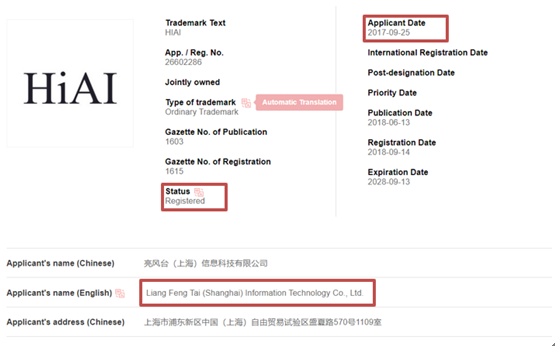Huawei, the Chinese telecommunications giant, as one of the world’s largest companies is a huge target for all types of counterfeiters, including trademark squatters seeking to capitalize on the company’s reputation. Surprising though it may be, a global powerhouse with scores of legal experts on payroll can still fall victim to such a well-known problem as trademark squatting even within its domestic jurisdiction.
Today, Huawei has applied for tens of thousands of marks in Mainland China, covering all 45 classes of goods/services, with over 5000 applications in Class 9 alone, an area where its main business lies.
Besides software and communication devices, Huawei's recent trademark filings tell the story of expanding business practices (or simply defensive trademark strategy). Trademark No. 49769513 "IPHOLD" was filed in Class 42 for goods/services such as genetic screening (for scientific research purposes); genome structure and function analysis; technical research; platform as a service (PaaS); research in the field of artificial intelligence; software as a service (SaaS); drug development services; drug research services; medical research; cloud computing.

“Huawei Xian” (No. 49785736), designated in Class 30, under the following goods/services: steamed buns; instant rice; honey; cereal flour; cereal products; dumplings; coffee; coffee beverages; coffee seasonings; rice.
These filings indicate a complete trademark portfolio in Mainland China –

Additionally, Huawei has a robust trademark portfolio in major jurisdictions like Hong Kong, Europe and North America.

However, this seemingly complete trademark portfolio has also been exploited by bad faith actors.
In December 2006, a hydraulic oil pump factory in Liaoning applied for the "Huawei" trademark in Class 7 for the following goods/services: centrifugal pumps, pumps (machines, engines or motor parts); lubricating oil pumps; pumps (machines); air pump (garage equipment); pumps for heating devices; vacuum pumps (machines); air compression pumps; suction pumps; hydraulic pumps. The registration was successfully approved in 2009.

Once Huawei discovered that their brand name was registered by another company, the communications giant took steps to file trademark opposition and non-use cancellation against the registered mark, but ultimately was not able to invalidate the “Huawei” trademark registered by the hydraulic oil pump company.
Since then, in 2016 and 2018, Huawei has successively submitted 3 "Huawei" trademarks (in Class 7). Trademarks No. 21164038 and 29861796 were partially rejected, and the partial rejection of trademark No. 33313918 is under review.
Huawei is not the only trademark that has been the subject of trademark squatting.
On September 25, 2017, Huawei demonstrated the artificial intelligence features of the "HiAI" chip to the media.
Not losing any time, a Shanghai technology company applied for the "HiAI" trademark on the same day.

More than a month after the public announcement, on November 10 of the same year, Huawei submitted a trademark application to CNIPA to register the trademark “HiAI” (No. 27403226). The trademark application was rejected in accordance with the “first to file” principle in the China Trademark Law. Since then, Huawei has been unsuccessfully attempting to resolve this issue for three years.